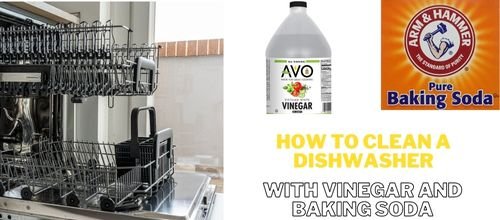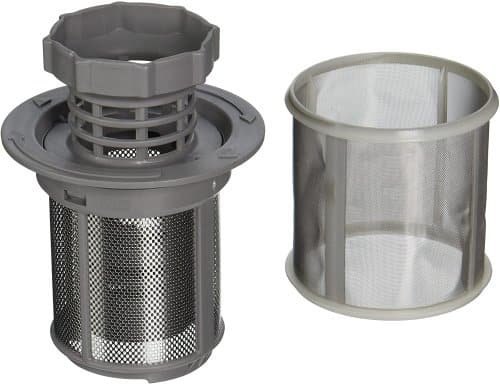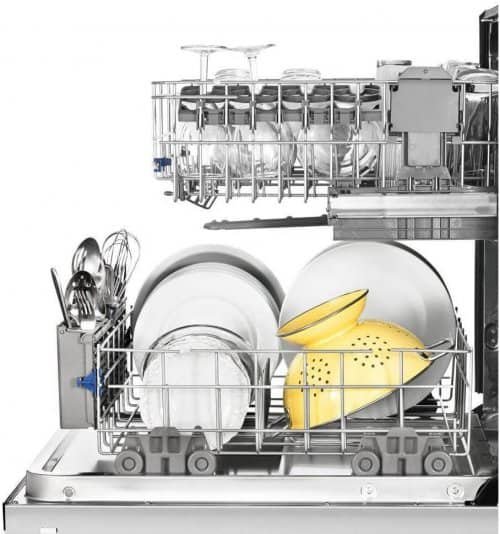We all rely on our dishwashers to clean our dishes efficiently, but did you know that your dishwasher also needs regular cleaning to maintain its performance? Over time, food particles, grease, and mineral buildup can accumulate, leading to unpleasant odors and reduced effectiveness. In this comprehensive guide, we’ll walk you through the step-by-step process of cleaning your dishwasher, ensuring it stays in top-notch condition.
Table of Contents
Gathering Your Supplies
Before you begin, make sure you have all the necessary supplies. You’ll need a soft cloth, vinegar, baking soda, citric acid, dishwasher cleaner, a toothbrush, and gloves to protect your hands.

Pre-Cleaning Preparation
Empty the dishwasher of any dishes or utensils. Check the drain at the bottom for any debris that might clog it and remove if necessary.
Cleaning the Exterior
Wipe down the controls and surfaces of the dishwasher with a damp cloth. For stubborn stains and residue, you can use a mixture of water and mild dish soap.
Removing and Cleaning the Filter
Locate the dishwasher filter, usually at the bottom of the tub. Remove it and rinse it under running water to remove food particles. Let it air dry before placing it back.

Dealing with Mineral Buildup
For mineral buildup, you have two effective methods. First, you can place a cup of vinegar on the top rack and run a cycle. Alternatively, you can sprinkle baking soda on the floor of the dishwasher and run a short hot water cycle.
Cleaning the Interior
Clean the spray arms using a toothbrush to dislodge any debris. Wipe down the interior walls and door with a cloth dipped in vinegar to remove any remaining buildup.

Addressing Hard Water Deposits
To combat hard water deposits, you can use citric acid. Place a bowl of citric acid in the bottom rack and run a hot water cycle. Alternatively, you can use a commercial descaling product.
Maintaining the Door Gasket
Clean the door gasket with a mixture of water and vinegar. Ensure it’s dry before closing the dishwasher to prevent mold growth. Regularly check for any signs of wear and tear.
Caring for the Silverware Basket
Remove the silverware basket and clean individual compartments with warm soapy water. Ensure proper drainage by checking for any blockages.

Cleaning the Dish Racks
Remove stains and rust from the dish racks using a paste of baking soda and water. Rinse thoroughly and ensure they are completely dry before placing them back in the dishwasher.
Final Touches
Run an empty cycle with a cup of vinegar on the top rack to remove any remaining odors and residue. You can also add a few drops of essential oil to give your dishwasher a pleasant scent.
Regular Maintenance Routine
Create a monthly cleaning routine to prevent future buildup. Regular maintenance will not only extend the lifespan of your dishwasher but also ensure optimal cleaning performance.

Conclusion
By following this step-by-step guide, you can keep your dishwasher clean and running smoothly for years to come. Regular maintenance is key to preventing odors, stains, and reduced efficiency. Invest a little time in cleaning your dishwasher, and you’ll enjoy sparkling clean dishes every time.
FAQs about Dishwasher Cleaning
- How often should I clean my dishwasher? Regular cleaning every month is recommended to maintain its performance.
- Can I use bleach to clean my dishwasher? It’s not recommended, as bleach can damage the rubber components and corrode metal parts.
- Is it necessary to remove the filter? Yes, removing and cleaning the filter is crucial to prevent clogs and ensure proper drainage.
- What can I do about stubborn stains? Baking soda paste or commercial dishwasher cleaner can effectively tackle stubborn stains.
- Can I use regular kitchen cleaner on the exterior? It’s best to use a mild dish soap solution to avoid damaging the exterior surfaces.

